Related Research Articles

The Hunter River is a major river in New South Wales, Australia. The Hunter River rises in the Liverpool Range and flows generally south and then east, reaching the Tasman Sea at Newcastle, the second largest city in New South Wales and a major harbour port. Its lower reaches form an open and trained mature wave dominated barrier estuary.

Orica Limited is an Australian-based multinational corporation that is one of the world's largest providers of commercial explosives and blasting systems to the mining, quarrying, oil and gas, and construction markets, a supplier of sodium cyanide for gold extraction, and a specialist provider of ground support services in mining and tunnelling.

The Port of Newcastle is a major seaport in the city of Newcastle, New South Wales, Australia. It is the world's largest coal port.

Wickham railway station is a former railway station which was located in the Newcastle suburb of Wickham, New South Wales. Situated on the Newcastle railway line, it was serviced by Central Coast & Newcastle Line and Hunter Line services until its closure. Wickham, along with Civic station, succeeded Honeysuckle station, which was closed in 1872, following its own replacement by Newcastle station. Following urban growth in the Newcastle region, both Wickham and Civic were opened to meet the growing demand for public transport in the region. The station's signal box, located at the station's western end at Stewart Avenue, was replaced in the 1960s with a building recognised as Australia's first television-equipped level crossing.
Newcastle Number 1 Sports Ground is a multi-use stadium located in Newcastle, New South Wales, and has a nominated capacity of approximately 10,000. It neighbours Newcastle Number 2 Sports Ground.
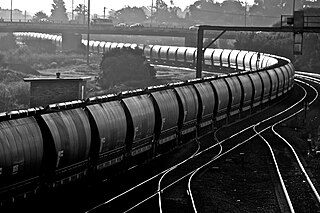
The Hunter Valley Coal Chain (HVCC) is the chain of coal delivery in New South Wales, Australia from coal mines in the Hunter Region to the Port of Newcastle and domestic coal-fired power stations in the Hunter Valley. The HVCC essentially follows the path of the Hunter River travelling south-east from the mining areas in the Hunter Valley to Newcastle.

Kooragang is the northernmost and largest suburb of the city of Newcastle, in the Hunter Region of New South Wales, Australia. Dominated by Kooragang Island, the eastern part of the suburb is primarily industrial, while the western part of the suburb consists of nature reserves. Covering an area of 35.4 km2 (13.7 sq mi), at the 2016 census, there were no people living in the suburb.
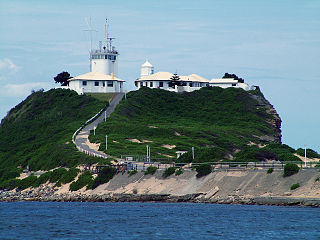
Nobbys Head is a headland located on the southern entrance to Newcastle Harbour, New South Wales, Australia. The headland is situated above the Hunter River and the Tasman Sea of the South Pacific Ocean.

The State Dockyard was a ship building and maintenance facility operated by the Government of New South Wales in Carrington, Newcastle, New South Wales, Australia between 1942 and 1987.
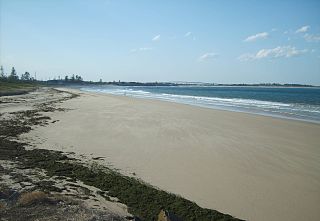
Stockton Beach is located north of the Hunter River in New South Wales, Australia. It is 32 km (20 mi) long and stretches from Stockton, to Anna Bay. Over many years Stockton Beach has been the site of numerous shipwrecks and aircraft crashes. In World War II it was fortified against a possible attack by Imperial Japanese forces. During that time it served as a bombing and gunnery range as well as a dumping area for unused bombs by aircraft returning from training sorties. The length of the beach, its generally hard surface and numerous items of interest along the beach make it popular with four-wheel drive (4WD) enthusiasts. Four-wheel drive vehicles are permitted to drive on Stockton Beach provided the vehicles are in possession of valid permits. The beach is also popular with fishermen and several different varieties of fish may be caught.
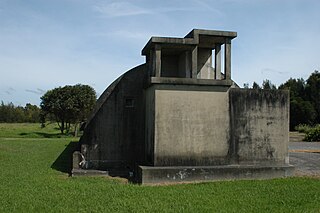
No. 131 Radar Station RAAF is a heritage-listed former Royal Australian Air Force radar station at Kooragang, City of Newcastle, New South Wales, Australia. They are also known as the Radar Igloo and Radar Buildings. They now operate as the Estuarine Interpretive Centre.
Robyn Mary Parker, is a former Australian politician, and was a member of the New South Wales Legislative Assembly representing Maitland for the Liberal Party from 2011 to 2015 and was previously a member of the Legislative Council of New South Wales between 2003 and 2011. Parker was the New South Wales Minister for the Environment and the Minister for Heritage in the O'Farrell government from 2011 until April 2014. Parker was succeeded by Rob Stokes in the Baird cabinet.
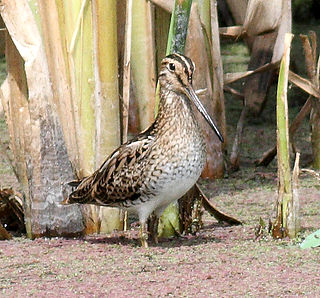
The Hunter Estuary Wetlands comprise a group of associated wetlands at and near the mouth of the Hunter River in the city of Newcastle, New South Wales, Australia. The wetlands are part of Hunter Wetlands National Park. 30 km2 of the wetlands have been recognised as being of international importance by designation under the Ramsar Convention. It was listed on 21 February 1984 as Ramsar site 287. A larger area of the wetlands has been identified by BirdLife International as an Important Bird Area (IBA). The wetlands are recognised as the most important area in New South Wales for waders, or shorebirds.
The Walsh Island Dockyard and Engineering Works was a dockyard and engineering workshop established by the Government of New South Wales in 1913, at Walsh Island, Newcastle, Australia. The foundation stone was laid on 15 June 1913 by Arthur Griffith, the Minister for Works. The dockyard was constructed as a replacement for Sydney's Cockatoo Island Dockyard, that was taken over by the Federal Government in 1913.

The New South Wales Standard suburban carriage stock are a class of electric multiple units that were operated by the New South Wales Government Railways and its successors between 1926 and 1992. They served on the Sydney suburban network. In the years before their withdrawal, they were nicknamed Red Rattlers.
The NSW Environment Protection Authority (EPA) is an independent statutory authority that sits in the Environment portfolio as part of the Planning and Environment cluster. It was established as an independent governing board in February 2012 separate from the Office of Environment & Heritage. The EPA is the state’s primary environmental regulator, working with businesses, government, community and environment groups to manage and reduce pollution, waste and adverse impacts on the environment.

The Stockton Bridge is a road bridge that carries Nelson Bay Road across the Hunter River, between Kooragang and Stockton in the Hunter Region of New South Wales, Australia. The bridge and Nelson Bay Road serve as the main transport route between Newcastle and the Tilligerry and Tomaree peninsulas in Port Stephens. The bridge carries motor vehicles and a central grade-separated shared cycleway and footpath.

SS Kuring-gai was a ferry that served on the Sydney to Manly run from 1901 to 1928.
Blackbutt Reserve is a nature reserve in the Newcastle region of New South Wales, Australia.
"Weevils in the Flour" is a song derived from a poem written in 1960 by Dorothy Hewett, "Where I Grew to be a Man". It was published first in Tribune in 1960 and then in Hewett's joint book of verse What About the People! published in 1963. The poem was put to music in 1963 by Michael Leyden. It tells of a child growing to be a man in a makeshift settlement during the Great Depression in Newcastle NSW. The settlement lay directly opposite Australia’s largest steel factory, owned by the mining giant BHP. The song describes the privations of the settlers and the environmental degradation of the area. In the last verse it reaches an upbeat conclusion:
References
- ↑ Wetherall, Lachlan. "Walsh Island Aerodrome | A bit of this, a bit of that" . Retrieved 26 May 2021.
- ↑ "CURRENT NEWS". Newcastle Morning Herald and Miners' Advocate (NSW : 1876 - 1954). 21 September 1912. p. 4. Retrieved 26 May 2021.
- ↑ Scanlon, Mike (14 September 2018). "Newcastle's island hub of industry". Newcastle Herald. Retrieved 26 May 2021.
- ↑ NSW Land and Registry Services Charting Map - County Gloucester sheet 2